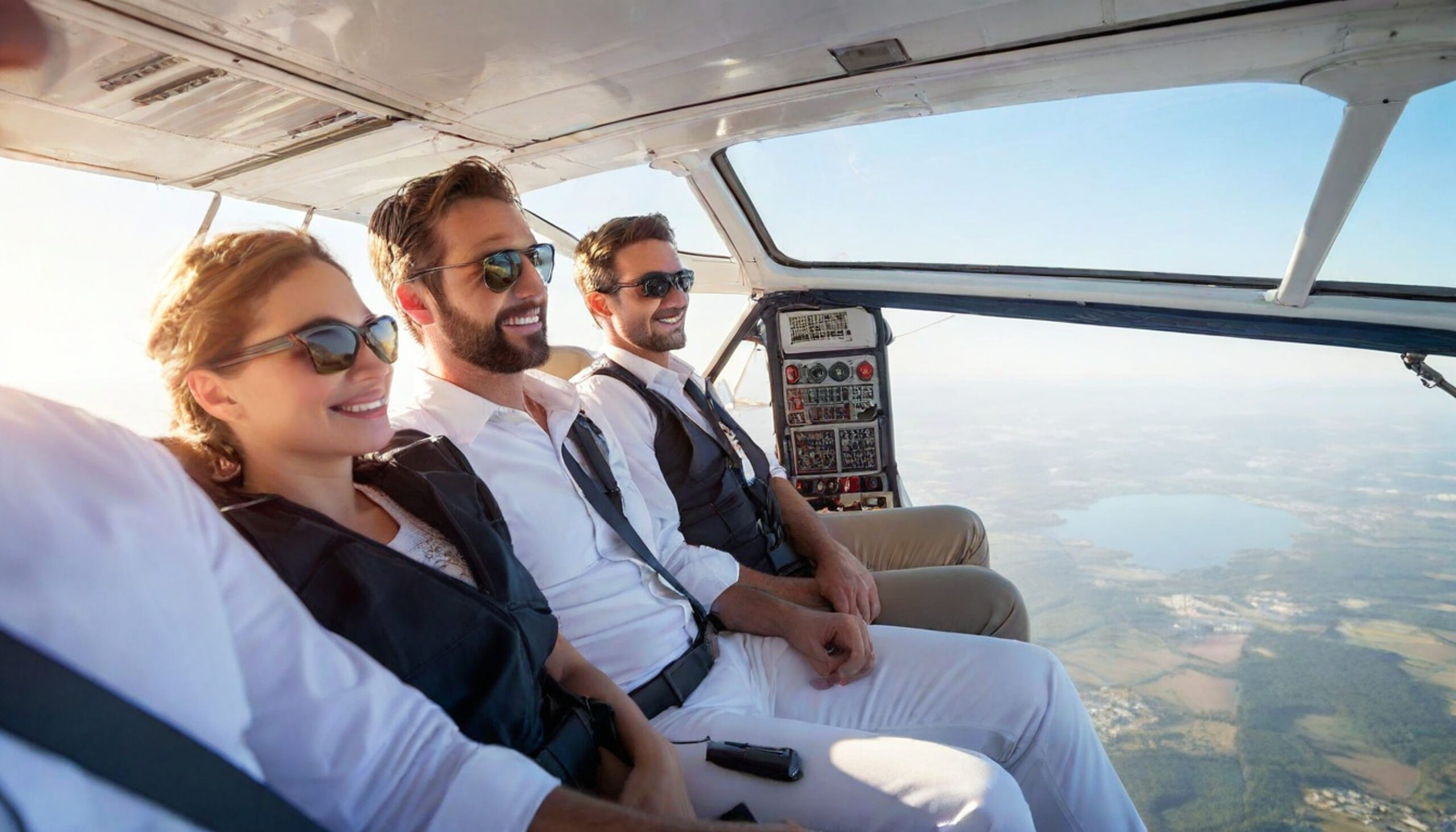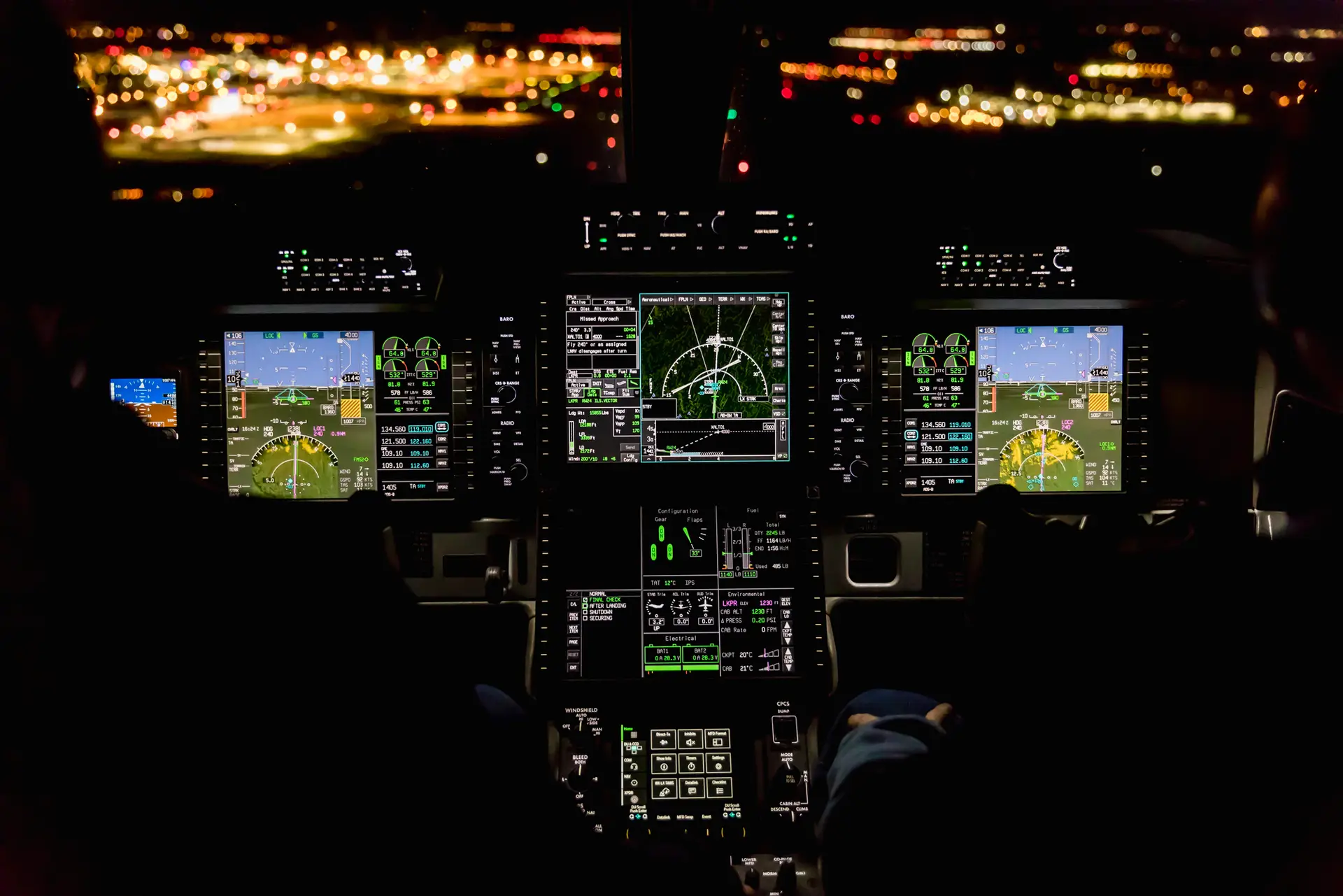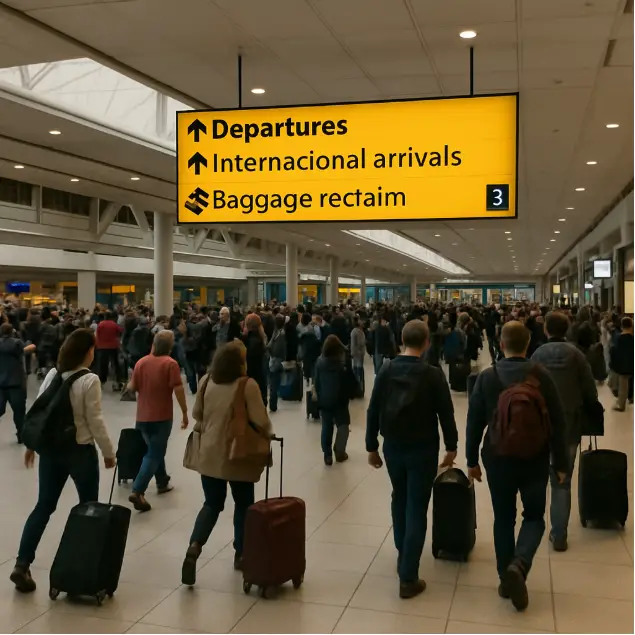How Many Passengers can a Private Pilot Carry?

- aviatorpro_6714
When you’re considering a journey into the skies with a Private Pilot License (PPL), it’s essential to understand the rules and limitations that come with it. One of the common questions that arise is, “How many passengers can a private pilot carry?” This article delves into the privileges and limitations of a PPL, the types of aircraft you can fly, and how far you can travel. Understanding these aspects is crucial for ensuring safety, compliance with aviation regulations, and maximizing your enjoyment of the flying experience.
The ability to carry passengers is one of the most attractive aspects of obtaining a PPL. However, it’s not just about loading up the aircraft and taking off. There are specific rules and considerations, such as weight limitations and weather conditions, that must be adhered to. This article will guide you through these considerations, ensuring you are well-prepared for your adventures in the sky.
Understanding the Private Pilot License (PPL)
The Private Pilot License is a popular choice for aviation enthusiasts and hobbyists. It allows individuals to fly for personal reasons, but not for commercial purposes. With a PPL, you can enjoy the freedom of flight while adhering to specific rules set by aviation authorities. Obtaining a PPL is an exciting milestone that opens the door to numerous flying opportunities, whether for leisure, travel, or personal achievement.
PPL Privileges and Limitations
With a PPL, pilots can fly an aircraft for non-commercial purposes, carry passengers, and enjoy flying as a hobby. However, there are certain limitations. A private pilot cannot fly for hire or compensation, which means they cannot charge passengers for the flight. This restriction ensures that private pilots focus on flying for personal enjoyment rather than financial gain.
The license also requires pilots to adhere to visual flight rules (VFR), which means flying only in good weather conditions. Night flying is possible, but additional training and endorsements are needed. Adhering to VFR ensures safety by maintaining visual reference to the ground and other obstacles, reducing the risk of disorientation and accidents.
How Many Passengers Can You Carry?
A private pilot can carry as many passengers as the aircraft legally allows. This is determined by the aircraft’s seating capacity and weight limitations. For instance, if the aircraft is a four-seater and within weight limits, you can carry three passengers. It’s crucial to ensure that the total weight, including fuel and luggage, does not exceed the aircraft’s maximum takeoff weight. Understanding these limitations is essential for maintaining the aircraft’s performance and safety.
It’s not just about the number of seats; pilots must consider the weight distribution and balance of the aircraft. Overloading or improperly distributing weight can affect the aircraft’s handling and stability. Pilots must also account for the fuel required for the journey, ensuring there’s enough for the trip while staying within weight limitations. Proper planning and adherence to these guidelines ensure a safe and enjoyable flight experience.
Can a Private Pilot Fly Internationally?
Flying internationally with a private pilot license is possible, but it involves additional considerations. Pilots must comply with the regulations of the destination country, which might include obtaining permission to land, understanding airspace classifications, and knowing the customs and immigration procedures. This process can add complexity to flight planning but also expands the horizons for private pilots, allowing them to explore new destinations.
International flying requires thorough preparation and understanding of the rules of each country you plan to enter. This may involve obtaining specific clearances, understanding different navigation systems, and being aware of cultural differences in aviation practices. Proper planning ensures a smooth and hassle-free international flying experience, allowing you to enjoy the unique perspectives and experiences that come with flying in different parts of the world.
What Can You Fly With a Private Pilot License?
A PPL allows you to fly most single-engine airplanes, provided you are familiar with the aircraft and have received the necessary training. You can also add ratings to your license to fly multi-engine airplanes or to operate in specific conditions, like flying on instruments (IFR). These additional ratings enhance your skills and expand the range of aircraft and conditions you can safely operate in.
The flexibility to fly different types of aircraft makes a PPL versatile and valuable. Whether you prefer leisurely flights in a basic trainer or challenging yourself with more complex aircraft, the PPL provides a foundation for continuous learning and growth in aviation. Each new rating or endorsement you obtain represents an opportunity to enhance your capabilities and enjoy a wider variety of flying experiences.
What Planes Can You Fly With a Private Pilot License?
Private pilots are typically limited to small aircraft weighing under 12,500 pounds. However, with additional training and endorsements, you can fly more complex aircraft, including multi-engine planes. The key is to ensure you are trained and qualified for the specific type of aircraft you intend to fly. This involves understanding the systems, performance characteristics, and handling of each aircraft type.
The journey from single-engine to multi-engine aircraft requires dedication and a willingness to learn. Multi-engine aircraft introduce new challenges and complexities, such as handling engine failures and managing more advanced systems. However, the rewards include increased speed, range, and the ability to fly in more diverse conditions, making it a worthwhile pursuit for many private pilots.
Private Pilot Privileges and Limitations
Understanding the privileges and limitations of a PPL is vital for safe and compliant flying. Here are some of the key points:
- Carrying Passengers: You can carry passengers, but you cannot charge them for the flight. All expenses should be shared equally among all passengers, including the pilot. This ensures that the flight remains a non-commercial operation, aligning with the regulations governing private pilot activities.
- Flight Conditions: You must fly under visual flight rules, which typically means clear weather. Additional training is required for instrument flight rules (IFR). Flying under VFR requires continuous visual reference to the horizon and ground, which is crucial for maintaining orientation and ensuring safety.
- Aircraft Types: You are limited to the type of aircraft you are trained and certified to fly. Adding ratings can expand your capabilities. This means continuous learning and skill development, which is an exciting aspect of being a private pilot.
- International Flights: Possible, but require compliance with the destination country’s regulations. This involves careful planning and understanding of international aviation protocols, ensuring that your international flying experience is both legal and enjoyable.
Can You Fly People with a Private Pilot License?
Yes, you can fly people with a private pilot license, but with the restriction that you cannot receive compensation for doing so. This means no commercial operations, and any costs associated with the flight should be equally shared. This restriction is in place to maintain the recreational nature of private flying and to ensure pilots remain focused on safety and personal enjoyment.
Sharing the experience of flight with friends and family is one of the most rewarding aspects of having a PPL. However, it’s important to communicate the cost-sharing expectation upfront to ensure everyone is on the same page. This transparency helps maintain good relationships and ensures that all parties understand the nature of the flight arrangement.
How Far Can You Fly with a Private Pilot License?
The distance you can fly with a private pilot license is not limited by the license itself but by factors such as the aircraft’s fuel capacity and range, weather conditions, and personal endurance. With proper planning and refueling stops, long cross-country flights are possible. Pilots often plan their routes meticulously, taking into account factors such as terrain, available airports, and potential weather changes.
Long-distance flights require careful planning and consideration of various factors, including navigation, fuel management, and emergency procedures. Pilots must be prepared for unexpected situations and have contingency plans in place. Despite these challenges, long flights offer an unparalleled sense of accomplishment and the opportunity to see the world from a unique perspective.
Private Pilot Restrictions
Several restrictions come with a private pilot license, primarily focusing on non-commercial flying. Pilots must not fly for hire, and they must adhere to visual flight rules unless they have an instrument rating. These restrictions are designed to ensure that private pilots operate within their capabilities and maintain a focus on safety.
PPL Aircraft
When it comes to the types of aircraft you can fly with a PPL, the options are broad but typically include small, single-engine planes. Training and endorsements can expand your range to include more advanced aircraft. This progression allows pilots to continually develop their skills and take on new challenges.
Each step forward in your flying journey, whether it involves learning to fly a new type of aircraft or obtaining an additional rating, represents an exciting opportunity for growth. The key is to approach each new challenge with an open mind and a commitment to learning, ensuring that your flying remains safe and enjoyable.
Conclusion
Earning a private pilot license opens a world of opportunities for personal flying adventures. While there are limitations, such as not flying for hire and adhering to visual flight rules, the freedom to carry passengers and explore new destinations is a rewarding experience. Understanding the privileges and limitations of a PPL ensures that you can enjoy flying safely and within legal boundaries.
Whether you’re planning a local trip or considering an international flight, having a PPL provides the foundation for a lifetime of aviation enjoyment. As always, ensure you are well-trained, prepared, and informed before taking to the skies. The journey of a private pilot is one of continuous learning and discovery, offering unparalleled experiences and the joy of flight.



